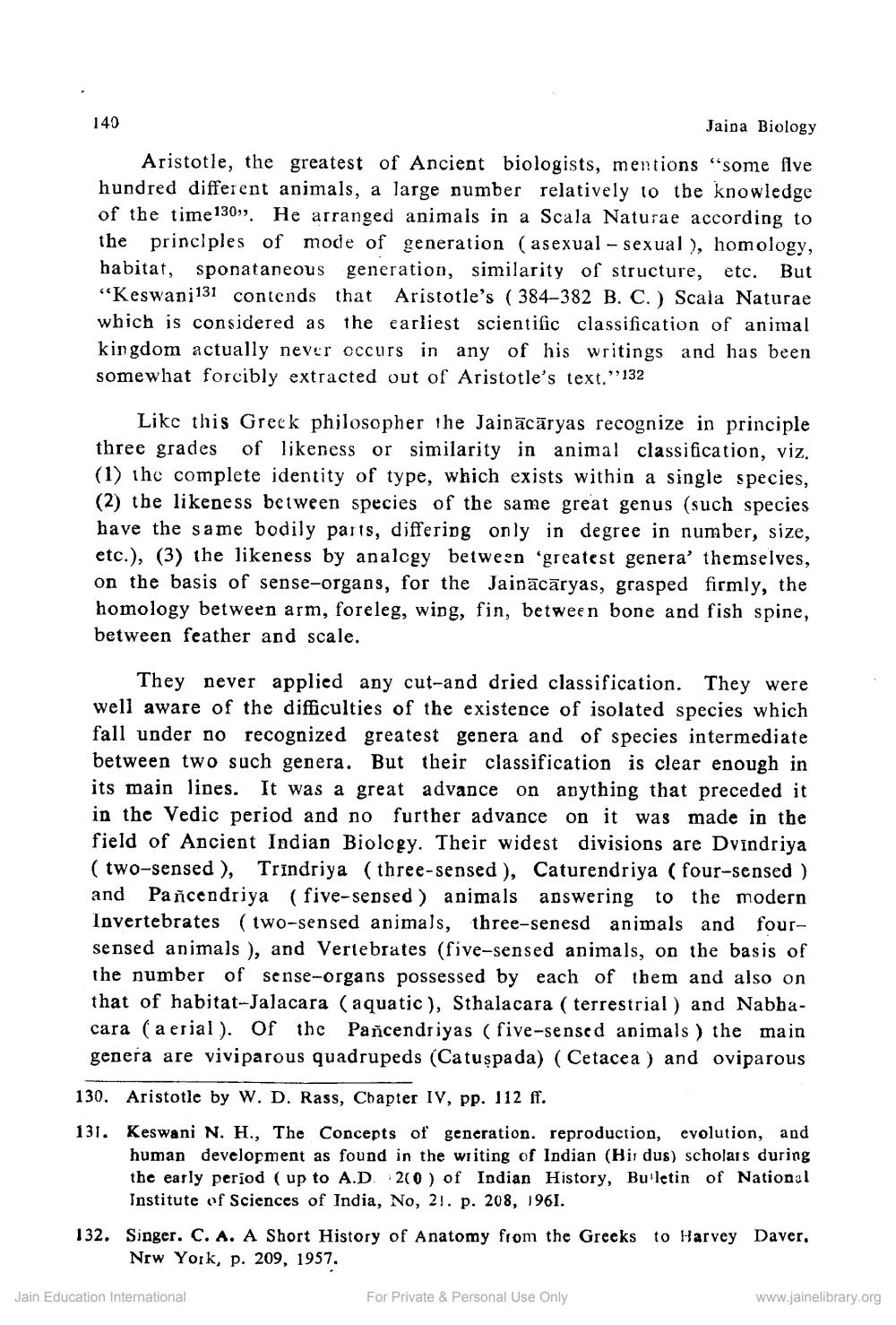________________
140
Jaina Biology
Aristotle, the greatest of Ancient biologists, mentions “some five hundred different animals, a large number relatively to the knowledge of the time 130». He arranged animals in a Scala Naturae according to the principles of mode of generation (asexual - sexual), homology, habitat, sponataneous generation, similarity of structure, etc. But “Keswani131 contends that Aristotle's (384-382 B. C.) Scala Naturae which is considered as the earliest scientific classification of animal kingdom actually never occurs in any of his writings and has been somewhat forcibly extracted out of Aristotle's text."132
Like this Greek philosopher the Jainācāryas recognize in principle three grades of likeness or similarity in animal classification, viz. (1) the complete identity of type, which exists within a single species, (2) the likeness between species of the same great genus (such species have the same bodily parts, differing only in degree in number, size, etc.), (3) the likeness by analogy between 'greatest genera' themselves, on the basis of sense-organs, for the Jainācāryas, grasped firmly, the homology between arm, foreleg, wing, fin, between bone and fish spine, between feather and scale.
They never applied any cut-and dried classification. They were well aware of the difficulties of the existence of isolated species which fall under no recognized greatest genera and of species intermediate between two such genera. But their classification is clear enough in its main lines. It was a great advance on anything that preceded it in the Vedic period and no further advance on it was made in the field of Ancient Indian Biology. Their widest divisions are Dvindriya (two-sensed ), Trindriya (three-sensed ), Caturendriya (four-sensed ) and Pancendriya (five-sepsed) animals answering to the modern Invertebrates (two-sensed animals, three-senesd animals and foursensed animals ), and Vertebrates (five-sensed animals, on the basis of the number of sense-organs possessed by each of them and also on that of habitat-Jalacara (aquatic), Sthalacara ( terrestrial) and Nabbacara (a erial). Of the Pancendriyas (five-sensed animals ) the main genera are viviparous quadrupeds (Catuspada) (Cetacea) and oviparous
130. Aristotle by W. D. Rass, Chapter IV, pp. 112 ff. 131. Keswani N. H., The Concepts of generation. reproduction, evolution, and
human development as found in the writing of Indian (His dus) scholars during the early period ( up to A.D. 200) of Indian History, Buletin of National
Institute of Sciences of India, No, 21. p. 208, 1961. 132. Singer. C. A. A Short History of Anatomy from the Greeks to Harvey Daver,
Nrw York, p. 209, 1957. Jain Education International For Private & Personal Use Only
www.jainelibrary.org




